Wayanad symbolises all that is romantic about Kerala. The region’s fragrant musk turmeric or kasthuri manjal is supposed to restore skin but finding it isn’t that easy.

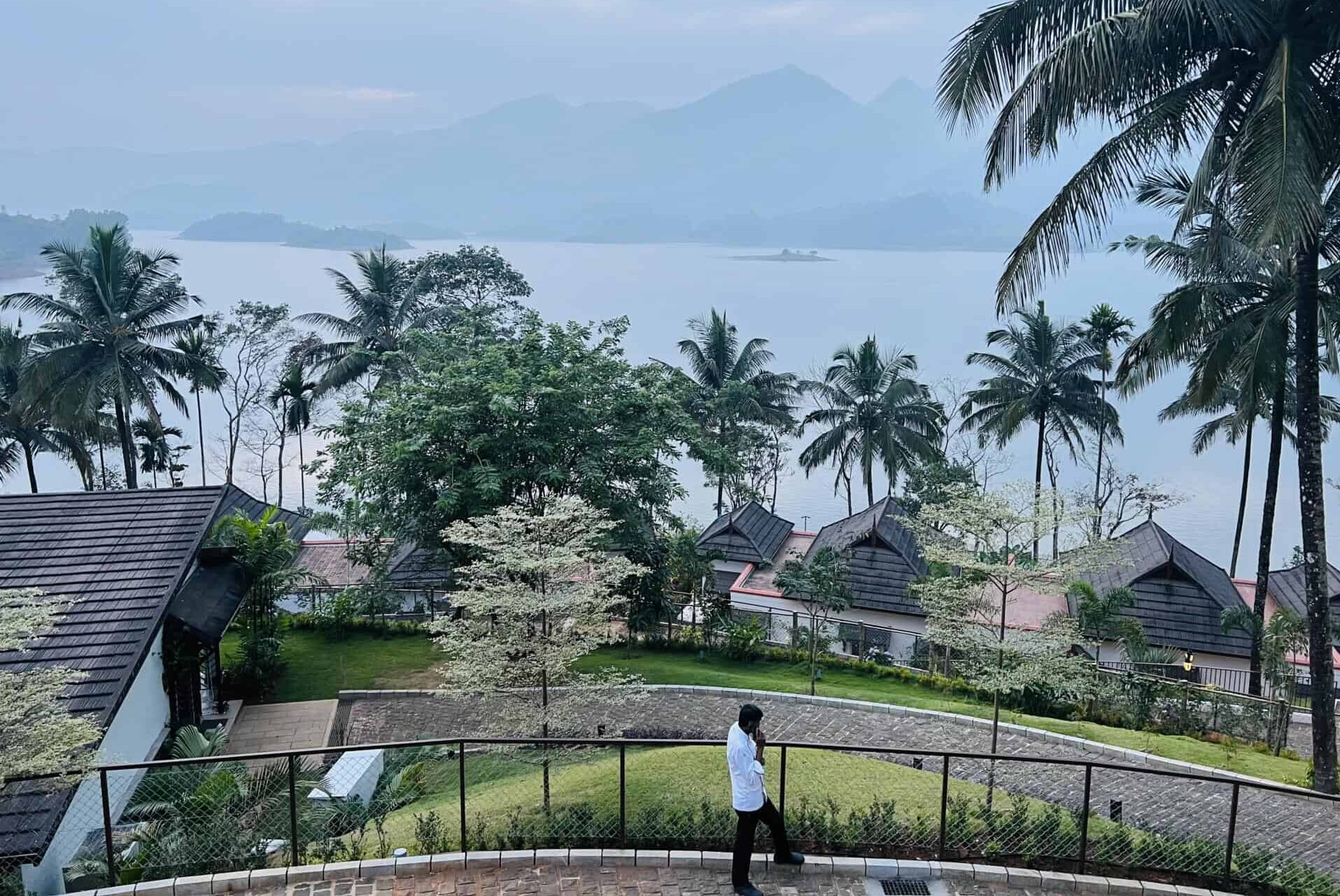
Wayanad symbolises all that is romantic about Kerala: brimming lakes, foliage so lush your eyes cool down, birds and butterflies galore including the rare and endemic Banasura laughing thrush, found only in this region on Chembra peak, which stands tall and proud, some 7000 feet above sea level. As a birder, I wish I could tell you that I am in Wayanad to see this bird, but frankly, I hadn’t heard of this beauty till I got here.
I am in Wayanad to find youth. Not A youth, mind you. No, this isn’t the story of an affair but a reclamation. I want to show my octagenarian mother the land of her youth so that she gains a spring in her step. I also want to buy that miraculous fragrant musk turmeric or kasthuri manjal (Curcurma aromatica) that grows wild in this region. By smearing copious amounts of it like Kerala women do, I hope to gain some of their youthful allure: all shiny cheeks and dark curly hair.
The Taj Wayanad Resort and Spa opened in October. What was once a bucket list item quickly got on the calendar. So here we are, my mother and I, being welcomed by general manager, Saji Thachery, who after posts across the country has also returned home.
The drive from Bangalore takes seven hours on a comfortable road. We leave at 7 am and reach by 2 pm for a late lunch. The 61-key property is stunningly situated on the banks of the Banasura lake, guaranteeing purple-and-pink sunsets.
Banasura was the son of Mahabali, venerated by Malayalis and celebrated through the Onam festival. His namesake lake is not as expansive as Kumarakom but prettier in my opinion because it is surrounded by mist-capped undulating hills. The Banasura Sagar dam which regulates this lake is India’s largest earth-filled dam. Having no idea what that meant, I discovered that earth dams are more sustainable relative to concrete dams because they are made from local packed soil and stones. The red earth of Wayanad built this dam.
Every hotel in Kerala has to deal with the distinct architecture of Kerala tharavad homes. Some brands like CGH Earth emulate it while others use it as a touchstone. The Taj takes the latter approach using dark wood and sloping roofs to reference the local design language.
The rooms are spacious and comfortable, with Frette linens (or ones that felt like it anyway), Forest Essential toiletries and thoughtful touches like coconut oil for the hair– a very Kerala thing to do. After dumping our bags, we go to lunch where Chef Salin Kumar tells us that he can make whatever we feel like eating.
“I will have a North Indian lunch,” my mother announces, completely counter to her Kerala-food-loving usual self. Is this what happens to people when they go back to their “native” I wonder. Maybe returning to your native place makes you open, adventurous, bold in your choices…young. To my long-running mental list of things to do to age gracefully, I add one more item: return to your native place more often.
Over the next few days, we tuck into a spectacular puttu-and-kadala, which is to Kerala what dal-roti is to Punjab. Kadala curry is made with black chickpeas, coconut and curry leaves which are the ‘garam masala’ flavour that pervades all Kerala food. Puttu is coarsely ground red rice mixed with, yes, coconut and steamed in a special pot. It can be eaten with ghee and sugar, or bananas, or kadala curry or all of the above. To go to Kerala and not eat fish is what a Malayali would call a tragedy. The way they use prawns and pearl spot fish in their “meen polichathu” and “karimeen” dishes make homesick Malayalis salivate. Being vegetarian, we make do appam and stew, Kerala sadhya with hot pappadam, and expansive breakfasts.
We spend two days at the property and each day, I decide, will involve an adventure. There is zip-lining and boating on offer at Banasura Lake. We choose boating. As we slip into life-jackets, my mother is nervous about falling but when we actually get into the speedboat and cruise through the islands dotting the Lake, she is sanguine, indeed beatific.
After half-an-hour, we land and drive to the nearby herbal garden where the guide shows us the spices that have quite literally put Kerala on the map. It was pepper after all, that was among India’s earliest exports to the West. Wayanaden pepper is bigger and chewier than the Malabar pepper that I am used to. I also, for the first time, eat raw cardamom that I pick from the tree. Do you know that cardamom pods grow near the root? We go hunting from shop to shop, nursery to nursery for a turmeric plant but find none. So I buy some bottled “kasthuri manjal” hoping that it will give the youthful glow that it promises.
The next morning, I wake up early to go bird-watching in the property. A group of white-browed wagtails sing on the roofs creating a virtual orchestra. A woodpecker settles on a tree and shrieks loudly, a group of cormorants fly past.
As the light comes up, I go on a two-hour hike with an outfitter that the Taj contracts with: Muddy Boots. Owner Pradeep Moorthy tells me about the Banasura laughing thrush, accessible only if you hike near the top of Chembra Peak. Anwar, the guide shows us how to make a flower into a balloon, convert a leaf into a bubble maker, use one as a straw, and engage in other immersive, fun activities.
We walk for two hours, spotting hornbills, chewing on leaves, smelling flowers and learning oral and local knowledge of the kind that you cannot find on the Internet– a rare and precious commodity, these days.
There are a few things that put Wayanad on the global map. One is Edakkal Caves, a Neolithic era site with rock carvings that go back to 6000 B.C. It draws anthropologists and epigraphers from all over the world who fly in to see the Brahmi and Pali inscriptions in these caves.
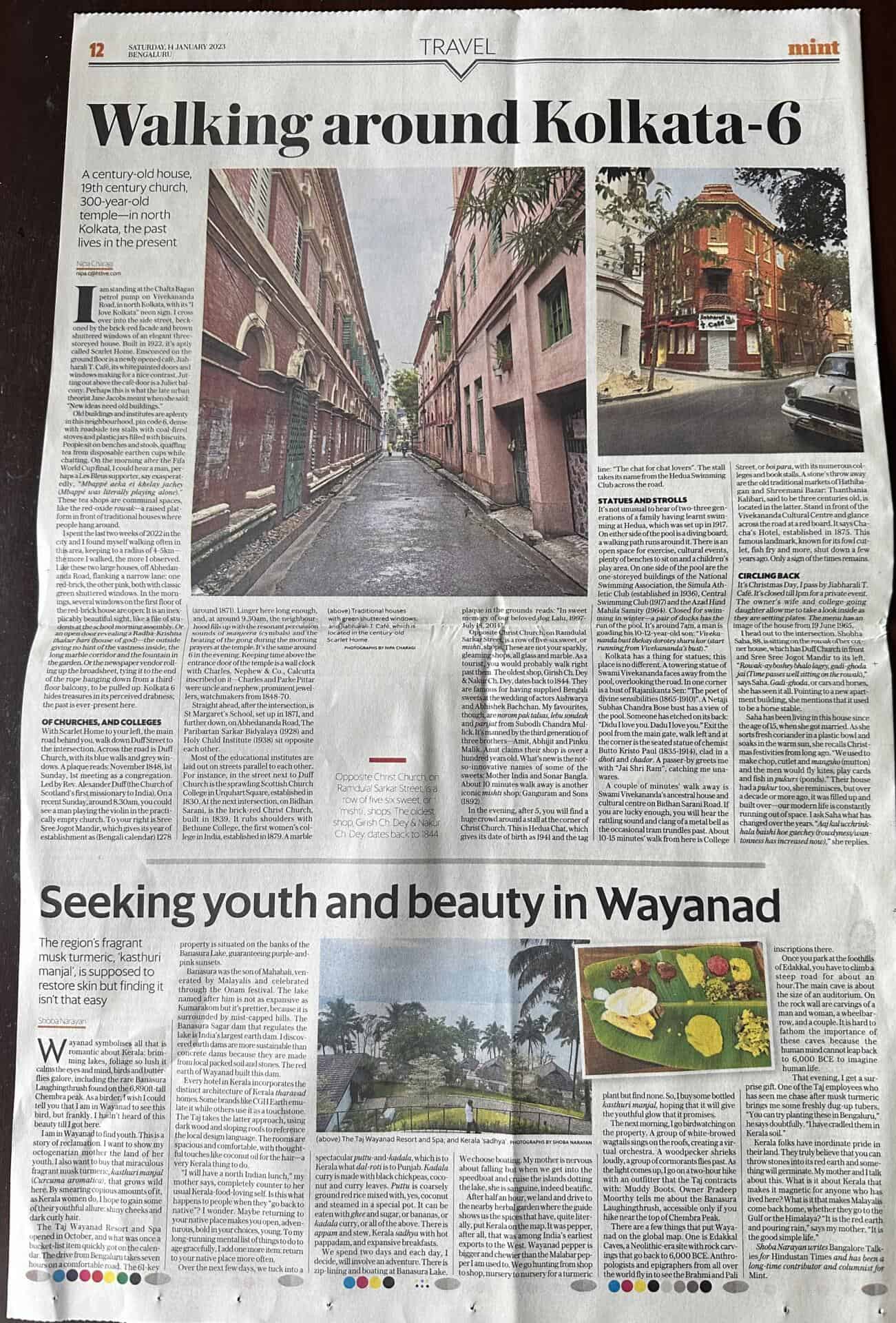
Once you park at the foothills of Edakkal, you have to climb up a steep road for about an hour. School kids wearing uniforms are here on excursion and run up and down the metal ladders that lead to the main cave– about the size of an auditorium. On the rock wall are carvings of a man and woman, a wheelbarrow, and a couple dancing, according to Nash, a guide who stands there waiting for customers. It is hard to fathom the importance of these old cave shelters because the human mind cannot leap back to 6000 B.C. to imagine human life at that time. What made them carve a male and female figure? Was it dark and scary? Did they think of it as an activity or art? I have no answers as I clamber back down to the parking lot.
It is late afternoon by then, and I want carbs. My Mom has soup and I have both pizza and pasta for good measure. I work out at the gym overlooking the lake, do some yoga in the pavilion and enjoy an aroma massage in the spa. That evening, I get a surprise gift. One of the Taj employees who has seen me chase after musk turmeric brings me some freshly dug up tubers. “You can try planting these in Bangalore,” he says doubtfully. “I have cradled them in Kerala soil so that they are comfortable.”
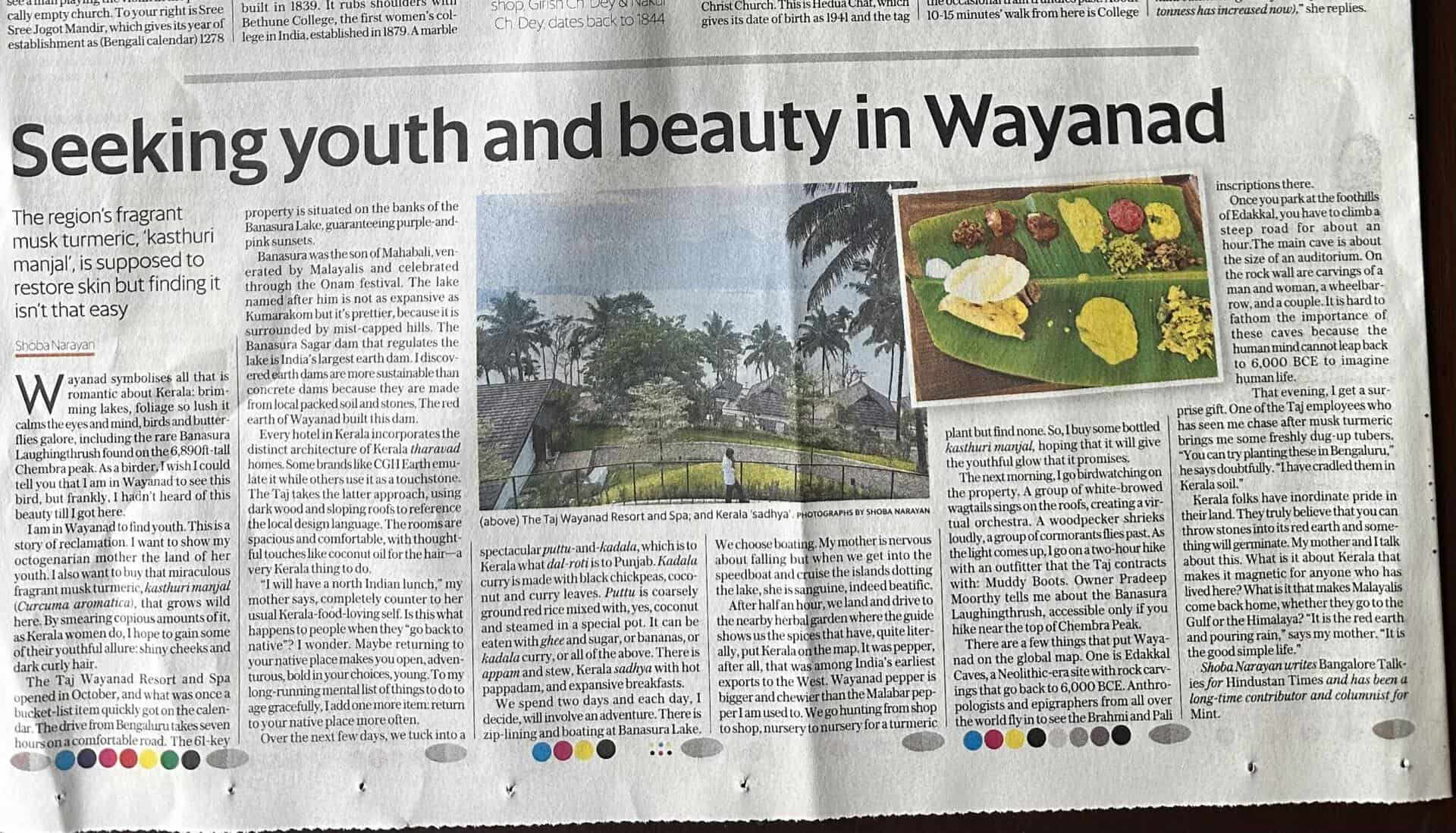
It is late afternoon by then, and I want carbs. My Mom has soup and I have both pizza and pasta for good measure. I work out at the gym overlooking the lake, do some yoga in the pavilion and enjoy an aroma massage in the spa. That evening, I get a surprise gift. One of the Taj employees who has seen me chase after musk turmeric brings me some freshly dug up tubers. “You can try planting these in Bangalore,” he says doubtfully. “I have cradled them in Kerala soil so that they are comfortable.”
Kerala folks have inordinate pride in their land. They truly believe that you can throw stones into Kerala’s red earth and something will germinate.
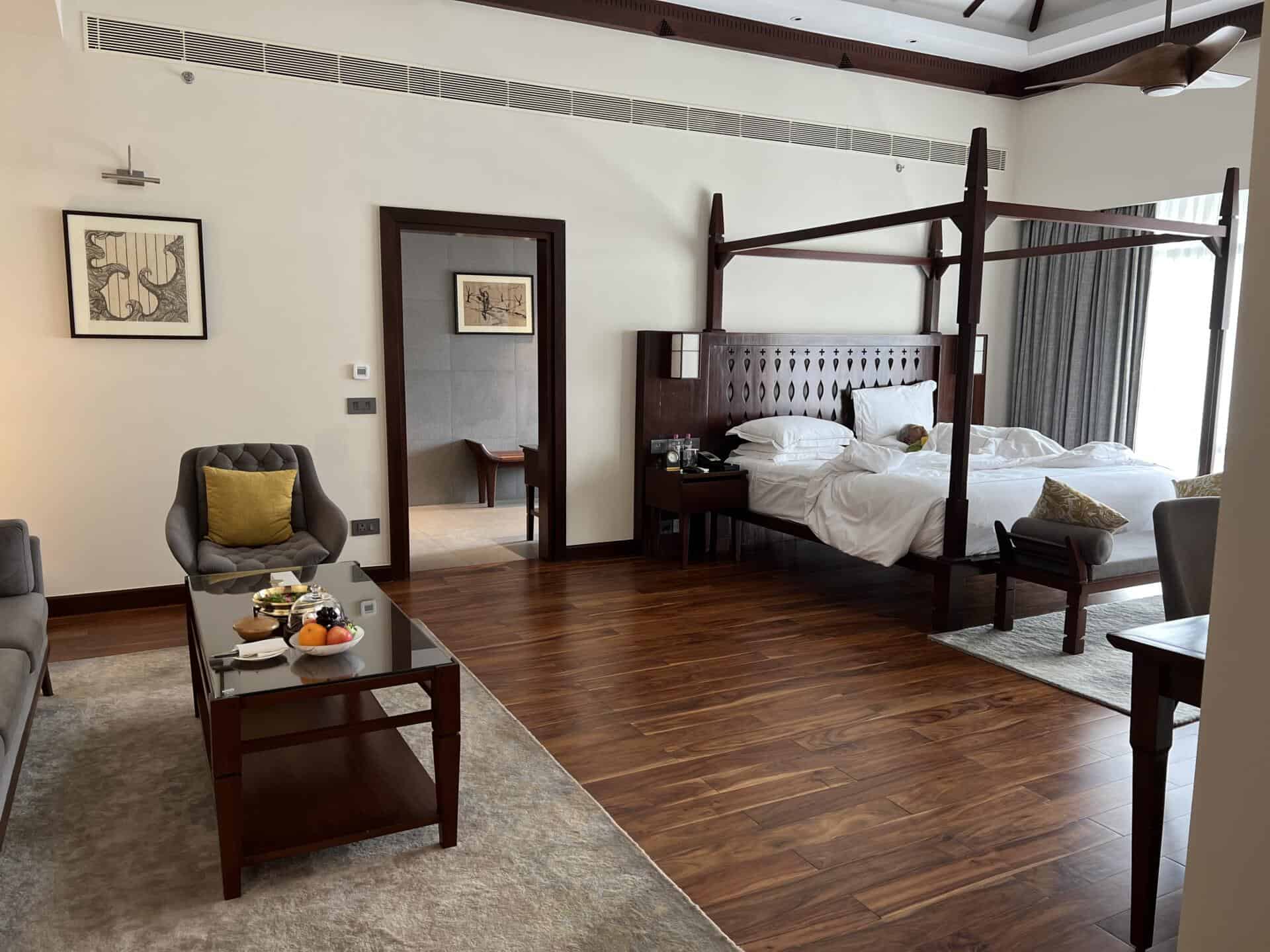
My mother and I talk about this on our last night, sitting outside by the pool. What is it about Kerala that makes it magnetic for anyone who has lived here? Is it the spices, the food, the tropical warmth, or the verdant greenery? What is it that makes Malayalis come back home whether they go to the Gulf or the Himalayas?
“It is the red earth and pouring rain,” says my mother. “It is the good simple life.”
Perhaps it is this simplicity that the Taj has channelled into its property, I think as I wave goodbye.
Shoba Narayan writes the Bangalore Talkies for Hindustan Times and has been a long-time contributor and columnist for Mint.
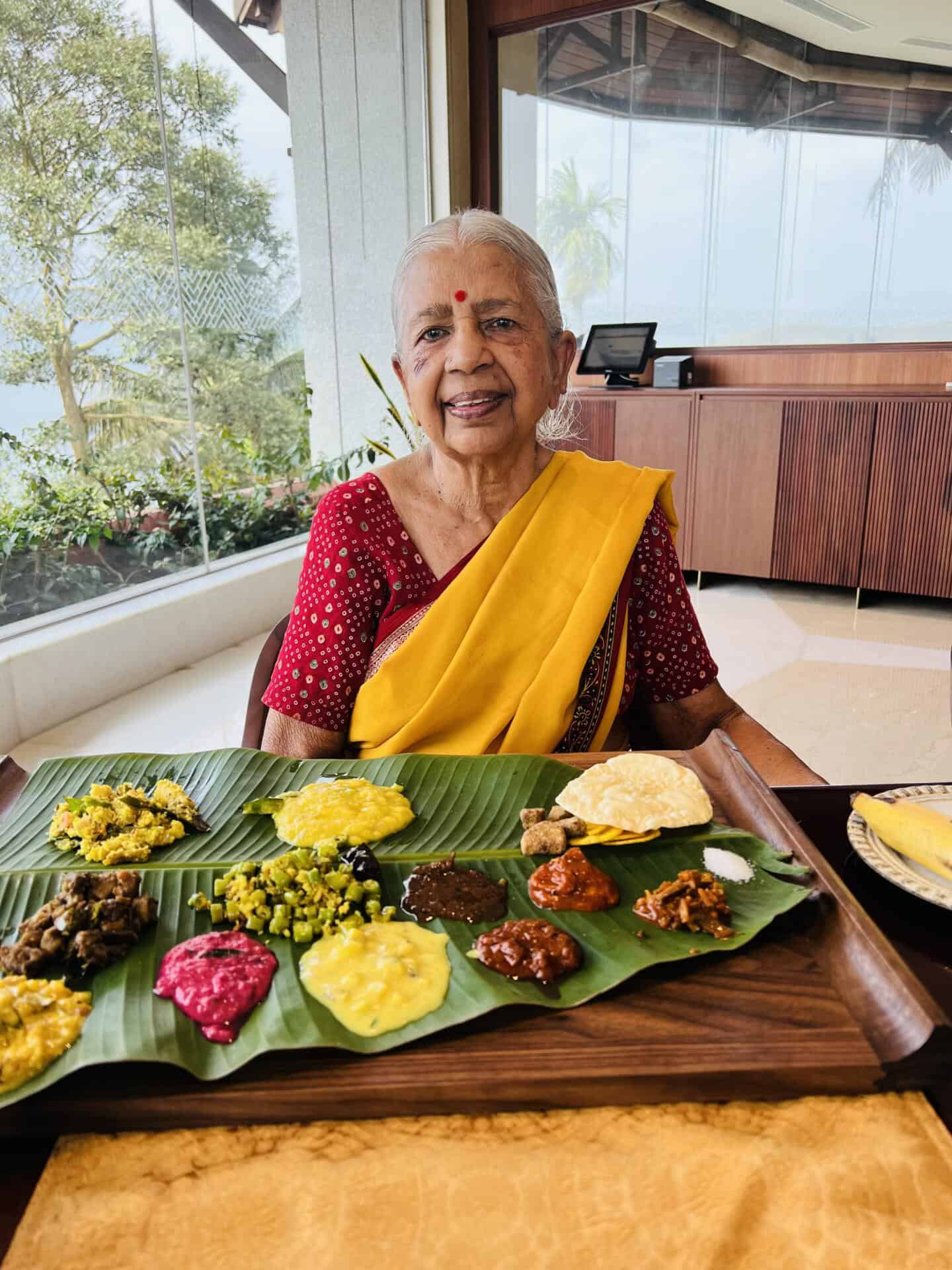






Very pleasing experience to read about the God’s own Country!